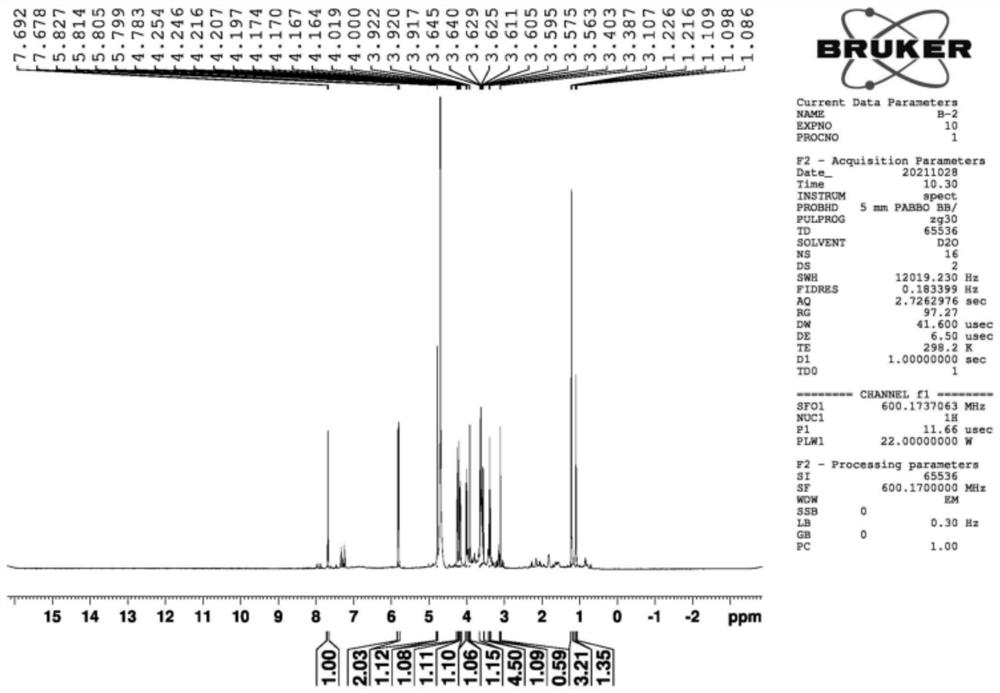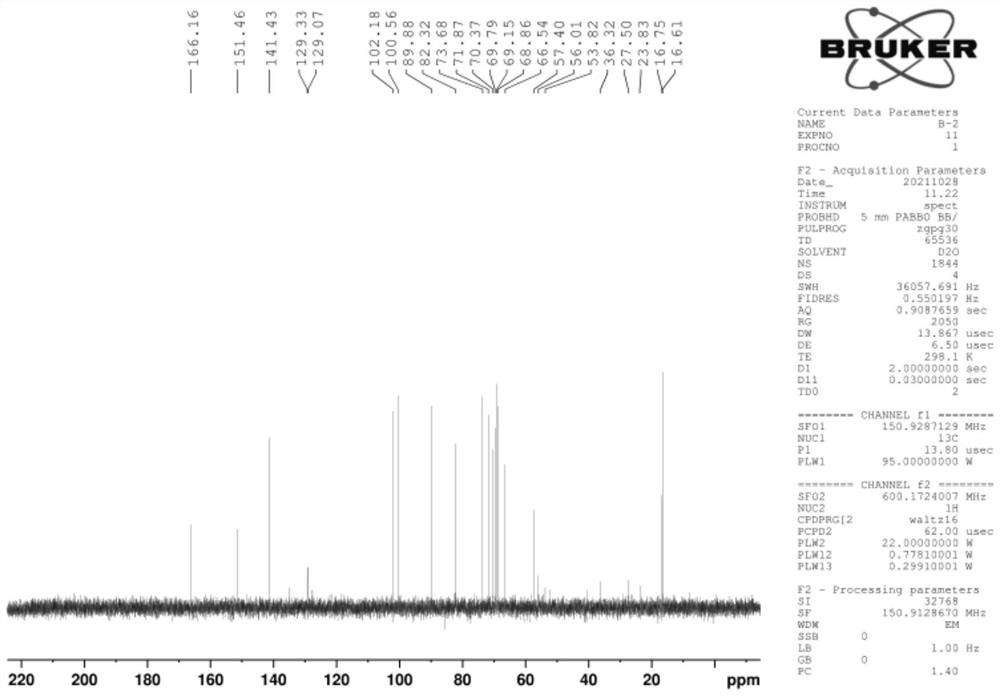Application of lotus corniculatus seed extract and rhamnosyluridine
A rhamnose-based, lavender root technology, applied in cosmetic preparations, skin care preparations, pharmaceutical formulations, etc., can solve problems such as the effect of lavender seed extract that has not been reported, and reduce skin oil. Secretion, reducing the effect of astringent pores
- Summary
- Abstract
- Description
- Claims
- Application Information
AI Technical Summary
Problems solved by technology
Method used
Image
Examples
Embodiment 1
[0052]This embodiment provides a method for extracting and separating rhamnosyluridine, the specific steps are as follows:
[0053] 1) Weigh 500 g of japonicus japonicus seeds, use an oil press to squeeze, and collect the filter cake.
[0054] 2) Add water 10 times the weight of the filter cake, extract at 80°C for 2 hours, and filter the obtained extract with 10 μm and 5 μm polypropylene membranes in turn to obtain a filtrate.
[0055] 3) Adsorb the filtrate with a D101 macroporous resin column, wash with pure water until the effluent is basically colorless, then wash with 30% ethanol until the effluent is basically colorless, collect the 30% ethanol eluate, and concentrate to the ethanol content 4% (here the ethanol concentration is the measured value of the alcohol meter).
[0056] 4) Adsorb the concentrated solution with an MCI CHP20P resin column, and wash the column with water, 10% ethanol, 20% ethanol, and 30% ethanol in sequence. Rhamnosyluridine is mainly concentrat...
Embodiment 2
[0059] This example provides a method for extracting and separating rhamnosyluridine. The specific steps are basically the same as in Example 1, except that the collected 30% ethanol eluate is not concentrated, and the 30% The ethanol eluate was adsorbed with MCICHP20P resin.
[0060] Specific steps are as follows:
[0061] 1) 500 g of japonicus japonicus seeds are pressed by an oil press to collect the filter cake.
[0062] 2) Add water 10 times the weight of the filter cake, extract at 80°C for 2 hours, and filter the obtained extract with 10 μm and 5 μm polypropylene membranes in turn to obtain a filtrate.
[0063] 3) Adsorb the filtrate with a D101 macroporous resin column, wash with pure water until the effluent is basically colorless, then wash with 30% ethanol until the effluent is basically colorless, and collect the 30% ethanol eluate.
[0064] 4) Adsorb the 30% ethanol eluate with the MCI CHP20P resin column, and wash the column with water, 10% ethanol, and 20% eth...
Embodiment 3
[0079] SEB-E6E7 cell oil secretion test:
[0080] The japonicus japonicus seed extract prepared by the same method as in the above-mentioned example 1, and the rhamnosyluridine separated by the same method as in the embodiment 1 were respectively prepared into an aqueous solution with a mass fraction of 0.2%, which were respectively marked as test substance 1 (Jiamen japonicus L. root seed extract); test substance 2 (rhamnosyluridine).
[0081] 1) Cell model construction and testing methods
[0082] SEB-E6E7 cells (purchased from Shanghai Baili Biotechnology Co., Ltd.) were used to construct a lipid model with 0.00625% linoleic acid. Add 100 μL complete medium and 100 μL linoleic acid to each well of model group, add 50 μL linoleic acid, 50 μL test substance 1 and 100 μL medium to each well of sample group 1, add 50 μL linoleic acid and 50 μL test substance 2 to each well of sample group 2 and 100 μL medium. Three parallel experiments were set up for each group. 37°C, 5% C...
PUM
 Login to View More
Login to View More Abstract
Description
Claims
Application Information
 Login to View More
Login to View More - R&D
- Intellectual Property
- Life Sciences
- Materials
- Tech Scout
- Unparalleled Data Quality
- Higher Quality Content
- 60% Fewer Hallucinations
Browse by: Latest US Patents, China's latest patents, Technical Efficacy Thesaurus, Application Domain, Technology Topic, Popular Technical Reports.
© 2025 PatSnap. All rights reserved.Legal|Privacy policy|Modern Slavery Act Transparency Statement|Sitemap|About US| Contact US: help@patsnap.com



